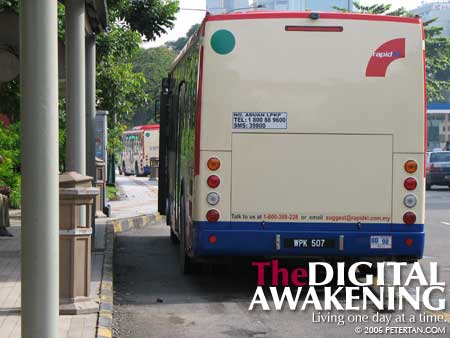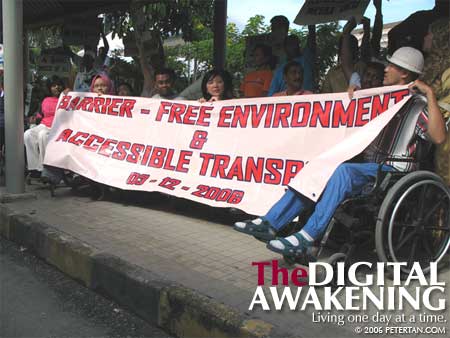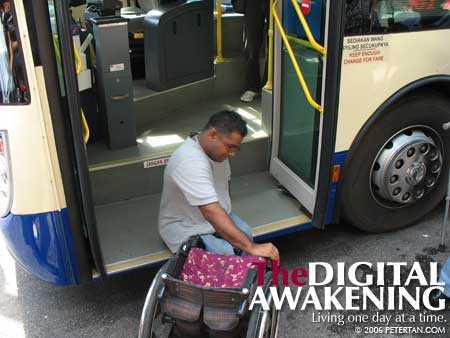Of Idiot Box And Thinking Out Of The Box
To disabled persons, two of the more useful inventions of the last century were the personal computer (PC) and the Internet. Before the advent of these two technologies, those with severe physical impairments mostly spend time watching television, listening to the radio or idle their time away. Reading a book or the newspaper is a chore because they needed someone to turn the pages for them.
The PC and the Internet changed all that. Assistive and adaptive technologies such as voice recognition software, head-mounted pointing devices and mouth-sticks allowed them to use a word processor, browse the Internet and communicate. For someone who does not have control of his limbs and bodily functions and needs to depend on others most of the time, being able to be in control in this sense is very liberating and empowering.
As the built environment and public transport do not favour people with severe impairments, they have no choice but be grounded at home, going out rarely for medical appointments and other important occasions. Humans being social creatures desire to reach out and interact with other humans. The advent of Internet Messaging (IM) has tremendously improved their social life, although not in traditional ways.
Yahoo Messenger, Windows Live Messenger and Skype are blessings for them. Now, they not only can communicate with friends locally but are able to get acquainted with strangers from the other side of the globe. This has opened up a world of endless possibilities for socialising, networking and other fruitful opportunities, education being one of them.
Nevertheless, these technologies can never replace the inherent need to do certain things the conventional way. There is a real need to live and intermingle with people in the community that they live in. They can only get to accomplish this if there is a concerted effort to remove the barriers that are preventing them from getting out from their homes. All it takes is a change of mindset from doing things in the commonly accepted ways to one that takes into account the various needs of different people. All that is needed is for planners to think out of the box. Unfortunately, there are very few of them who can do that here in Malaysia.



